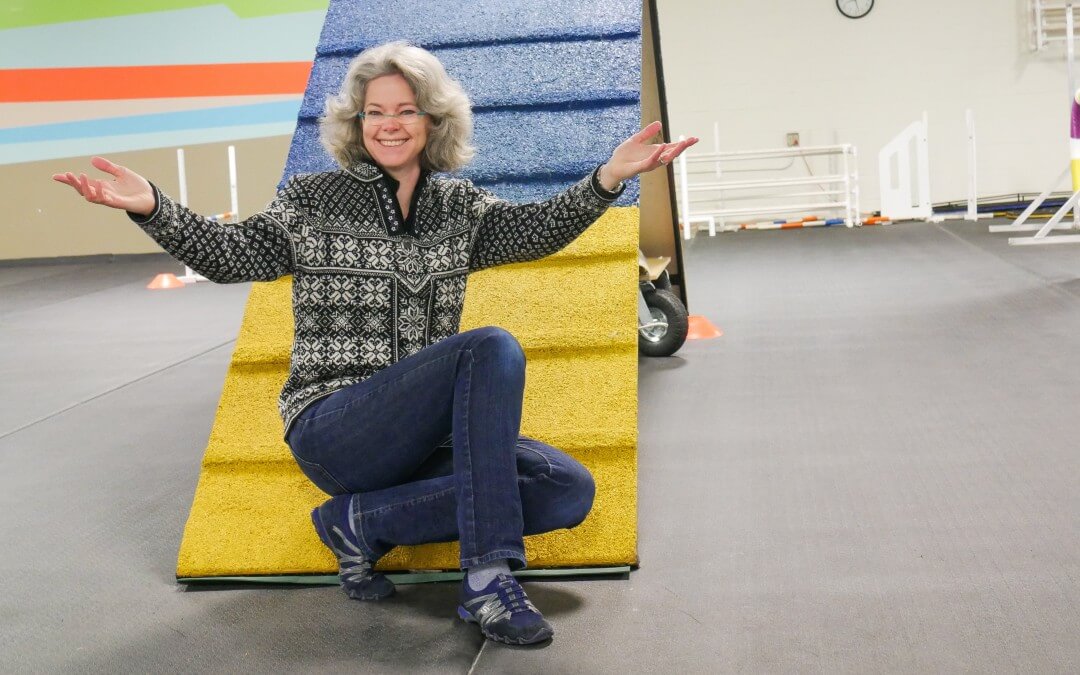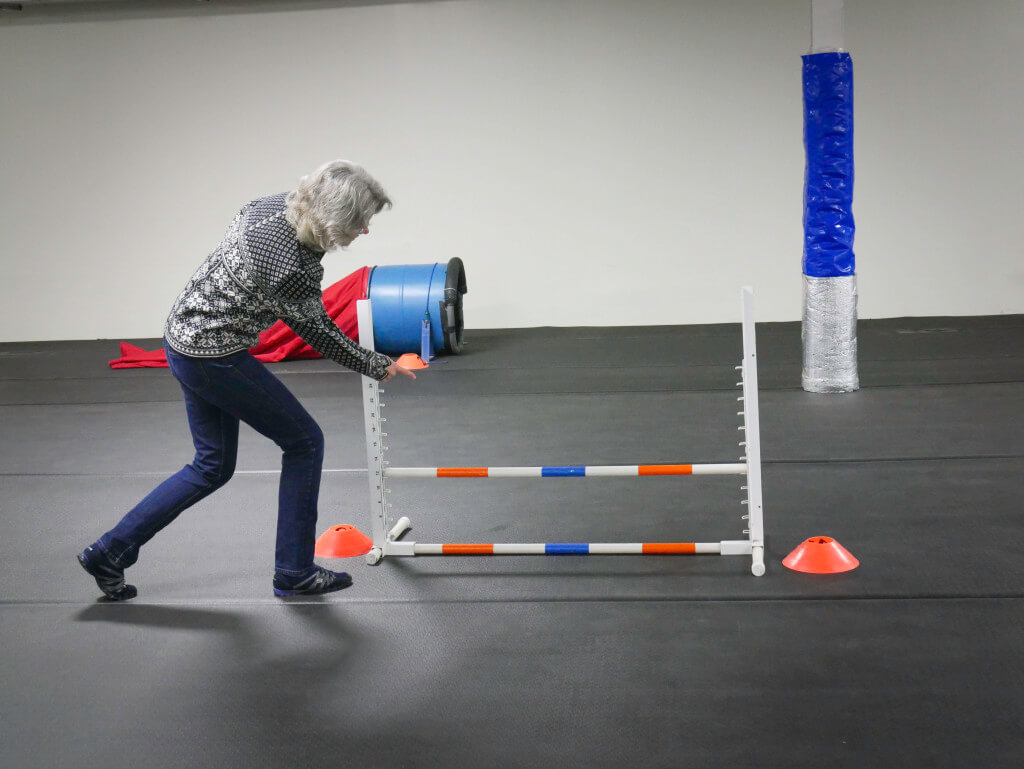Many people believe their dog is the only athlete on the agility course. However, being able to perform fluid body motions is crucial to directing a dog through an agility course. Of course our dogs are a lot more athletic than we are, but being able to achieve these fluid motions will make communicating and directing through the course a lot smoother, along with reducing the risk of injury on the course.
This is something that Twin Cities Obedience Training Club’s (TCOTC) Karen Radford, was struggling with. One of Karen’s favorite agility instructors, Teri O’Neill, handled her dogs almost entirely with body language. She teaches a series of crosses that require a lot of communication through body language between the handler and dog. While in class, Karen felt hopelessly inept while trying to signal her dog with these movements. While Karen was signaling her dog with one hand, she would be flailing the other hand around, confusing her dog. Teri’s first suggestion for Karen to sure up her movements was to join organized athletics. However, the athletics ship sailed years ago for Karen, and many others who are in agility. Teri’s next suggestion was to try ballroom dancing. This suggestion got Karen thinking of how TCOTC could incorporate dancing into a seminar at TCOTC.
This is where Marisa, an instructor and student at TCOTC, comes in. Marisa was a ballet dancer where she grew up in Denmark, joining The Royal Danish Ballet School when she was 15 years old. By age 16 Marisa was an apprentice to the Royal Danish Ballet, and eventually became a full time member of the company. As a dancer at The Royal Danish Ballet, Marisa was actually a government employee. So instructors focused a lot on injury prevention: building strength, balance, and flexibility are key to performing physically correct movements which in turn preserve the dancers’ careers.
So of course Marisa has all of the intangibles to create the dancers approach to agility seminar. One of the goals of the seminar for Marisa was to apply safety and injury prevention into the agility handling seminar that she was creating. She has incorporated a lot of exercises into the class that do not require being a champion agility handler – but that help warm-up and prepare handlers to perform the agility moves more fluently. These are movements that agility beginners and experts can all benefit from.
Another goal of the class is to raise awareness of alternative ways to perform a maneuver. One of the basic examples that Marisa can help with is when agility instructors tell students, “Stop leaning over your dog.” However, many of those students: A) do not realize they are leaning over their dogs, and B) don’t know what to do instead. As part of the class Marisa examines post turns. There are about four different ways to accomplish a post turn. Usually people with a Border Collie will stand as a post and turn. For many other dogs, if the handler stops, the dog stops. So Marisa will teach the different ways to accomplish post turns. Another common issue for people is they have trouble transitioning from running full speed around the course to doing a front cross, as they do not feel comfortable with the front cross. Dancers learn how to change directions while moving, while non dancers will a lot of times be running then stopping to attempt to figure out the footwork for the front cross. By now the dog is hesitating or confused by what the handler wants it to do next. When running our dogs, we do not have time to think of what foot goes where, it needs to be natural through practice, learned motions, and muscle memory. Marisa teaches exercises focusing on crosses and how to transition in and out of them.
The seminar, “A Dancer’s Approach,” is a dog-free seminar. Many people never attend a class or practice their moves without their dog present. Many students learn handler cues as they are running with their dog. Many people who have run their dog have been become frustrated when their dog is not turning with them, or is off taking the tunnel instead of the jump. The seminars are a great opportunity for people to learn how to execute the movements of agility without their dog. So when they run with their dog, they are confident in their motions. With clearer communication through the body language of their handler, the dog will feel more confident in what they should do, making everyone happy. Of course in an hour and a half class, people will not obtain perfect muscle memory. However, the seminars are great insight into what we can do to improve our movements on the course. Getting us to think, allowing us to demonstrate, and give us the material to practice. Eventually this could become a weekly class to really hone in on the muscle memory. However, for now it is going to stay a seminar.
There are three sessions to the Dancer’s Approach seminars. Session one approaches the movement of the head, arms, and feet for crosses and turns. The purpose of the first session is to make crosses smooth and safe. Session two approaches weight and spatial awareness in running, stopping, and turning. Also the second session will focus on adjusting crosses, finishing crosses, and performing different crosses. The point of the second session is to feel comfortable executing a cross whenever and wherever it is needed. Session three will approach examining the movements of the head, arms, and feet for post turn wraps, front cross wraps, blind cross wraps, Jaakko’s, and Ketchker’s. All three of these seminars will help an experienced handler refine their movements, and give inexperienced handlers a great foundation to raise their ability to run with their dog to the next level.
So far the seminars have been all sold out, and there has been a buzz around TCOTC about the techniques. We are excited to see where this goes, and the strides that are made by the people who attend the seminars.
To sign up for a seminar please CLICK HERE!


